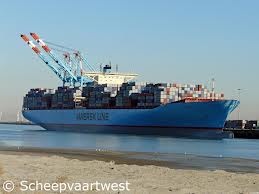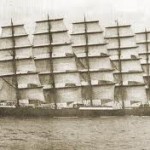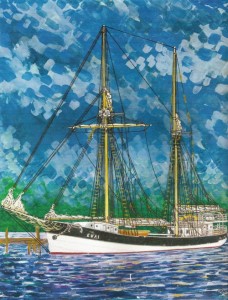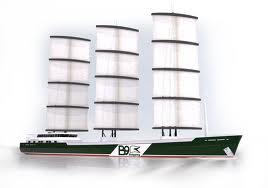Harbor and River Vessel Transport Company
The Sail Transport Network has printed an interview and my blog post about the Harbor and River Vessel Transport Company HARVEST
Since “Sail Transport for New York City Takes Shape” was posted on https://www.resilience.org/, and https://www.sailtransportnetwork.org/ , here are a few other websites that have picked it up using a “feed aggregator.” https://content.usatoday.com/topics/article/south+street+seaport/0cGO7ub82J1fc/1
https://caledoniacapitalgroup.com/energy_news
https://act-peakoil.org/
https://www.tpdx.net/aggregator/categories/3
https://transitionus.org/aggregator/%3A%20http%3A/2009/2010/2009/09/2011/02/07/www.reconomyproject.org
There is also a new video about the Vermont Sail Freight Project.
Why HARVEST? Why Now?
The New York City Bioregion is connected tenuously to the rest of the world by literally thousands of lifelines, including an aging and increasingly failure-prone power grid; an aging and leaky water system; and a vast network of roads, rails, shipping and air routes that rely exclusively on increasingly costly fossil fuels. Like a patient on intravenous life support, any major interruption in the flow of natural resources, energy, water or food to the metropolitan area could hamstring or permanently harm its economy and people. With global oil, gas and coal production predicted to irreversibly decline in the next 10 to 20 years, this collapse becomes not a question of if, but when.
All three of these great calamities were born out of the world’s profligate use of cheap, non-renewable fossil fuels. Like so many past boons, this one has now become a bane. It’s important to understand that all three crises are intimately linked to each other, and magnify each other: For example, a severe drought that continues in the mid-west, could cut off our region’s supply of wheat, corn and soy, causing food shortages and a financial meltdown. Peak oil requires that we drill for fossil fuels in increasingly extreme landscapes, like the deep-water Gulf of Mexico, prone to more and more powerful hurricanes, or by using hydraulic fracturing that will likely contaminate groundwater in the heart of New York and Pennsylvania farming. Our sprawling global oil pipeline stretches halfway around the globe, making us vulnerable and dependent on volatile states. An economic crash or financially-sapping resource war abroad, could wreck our balance of trade, and shatter our tax base, making it fiscally impossible to harden our infrastructure against climate change impacts, which would lead to more economic disasters. The accumulation of shocks could be catastrophic, if we do not prepare.
One of those tenuous lifelines is the global shipping industry and the NY/NJ Port. Higher petroleum costs, and higher wages in countries in which much of our imported goods are made could tear that lifeline. According to Low Tech Magazine, wind powered freighters may be just as fast as the largest most “modern” container ships.
 “The Eugen Maersk (the world’s longest ocean freighter at 1,300 feet) left Rotterdam on the tail end of a journey from Shanghai. But the giant freighter is cruising at 10 knots, well shy of her 26-knot top speed. At about half speed, fuel consumption drops to 100-150 tons of fuel a day from 350 tons, saving as much as $5,000 an hour.
“The Eugen Maersk (the world’s longest ocean freighter at 1,300 feet) left Rotterdam on the tail end of a journey from Shanghai. But the giant freighter is cruising at 10 knots, well shy of her 26-knot top speed. At about half speed, fuel consumption drops to 100-150 tons of fuel a day from 350 tons, saving as much as $5,000 an hour.
The German Preussen, the largest sailing ship ever built, was launched in 1902 and travelled mainly between Hamburg (Germany) and Iquique (Chile). It was rammed by a large steam vessel in 1910. A one way trip between Germany and Chile took the cargo vessel between 58 and 79 days. The best average speed over a one way trip was 13.7 knots. The lowest average speed was 10 knots. Additionally, one giant container ship can emit almost the same amount of cancer and asthma-causing chemicals as 50 million cars. It is time for a new age of sail.”
travelled mainly between Hamburg (Germany) and Iquique (Chile). It was rammed by a large steam vessel in 1910. A one way trip between Germany and Chile took the cargo vessel between 58 and 79 days. The best average speed over a one way trip was 13.7 knots. The lowest average speed was 10 knots. Additionally, one giant container ship can emit almost the same amount of cancer and asthma-causing chemicals as 50 million cars. It is time for a new age of sail.”
Who is doing it Now?:
The use of sailing vessels as transportation is nothing new. Many coastal schooners and sailing vessels are still working in the trade between main ports and remote islands and harbors in Africa, Caribbean, South America,
The Indian, Ocean and the Pacific. From Northern Ireland to Fiji, freight carrying sailing ships are being planned, built, and sailing. These first forays into what will become a huge post carbon enterprise are examples of how coastal short sea shipping along the North American coasts, bays, and rivers will be changing in the near and mid-term. Some
ships are being planned, built, and sailing. These first forays into what will become a huge post carbon enterprise are examples of how coastal short sea shipping along the North American coasts, bays, and rivers will be changing in the near and mid-term. Some
operating and soon to be operating examples are, the SV Kwai, Tres Hombres Packet Company, Greenheart, and B9 Shipping. These Ocean Going Ships Inspired HARVEST.
The idea for a the Harbor and River Vessel Transport Company came from a discussion I had a few years ago with Christina Sun an artist who blogs about things maritime at Bowsprite, and Will Van Dorp who photographs everything about New York Harbor. Will blogs at Tugster. During those conversations and talking with others who love sailing vessels and would like to put them to work hauling farm goods and general cargo on the Hudson River, the Bays of New York Harbor, and Long Island Sound — the genesis on an idea for just such a venture started to come together.



